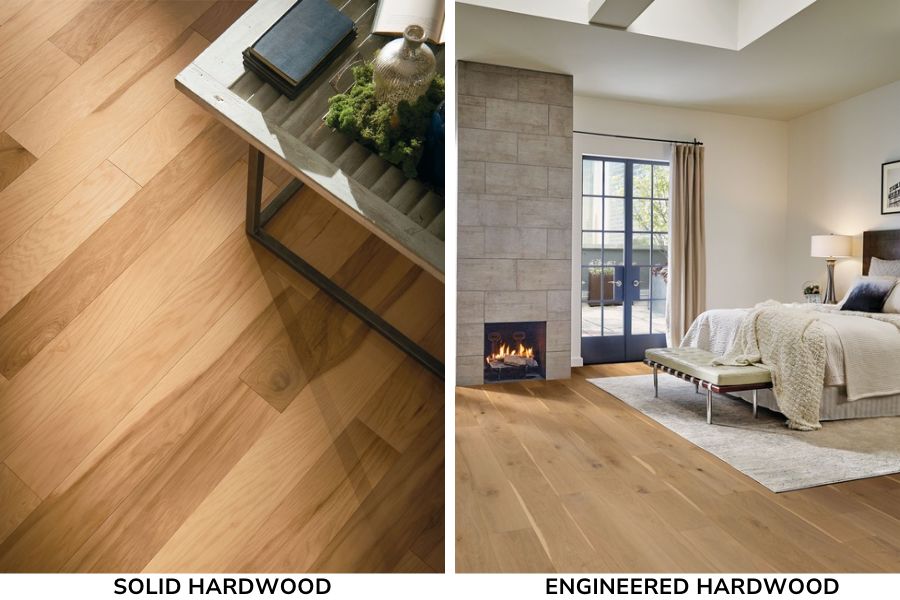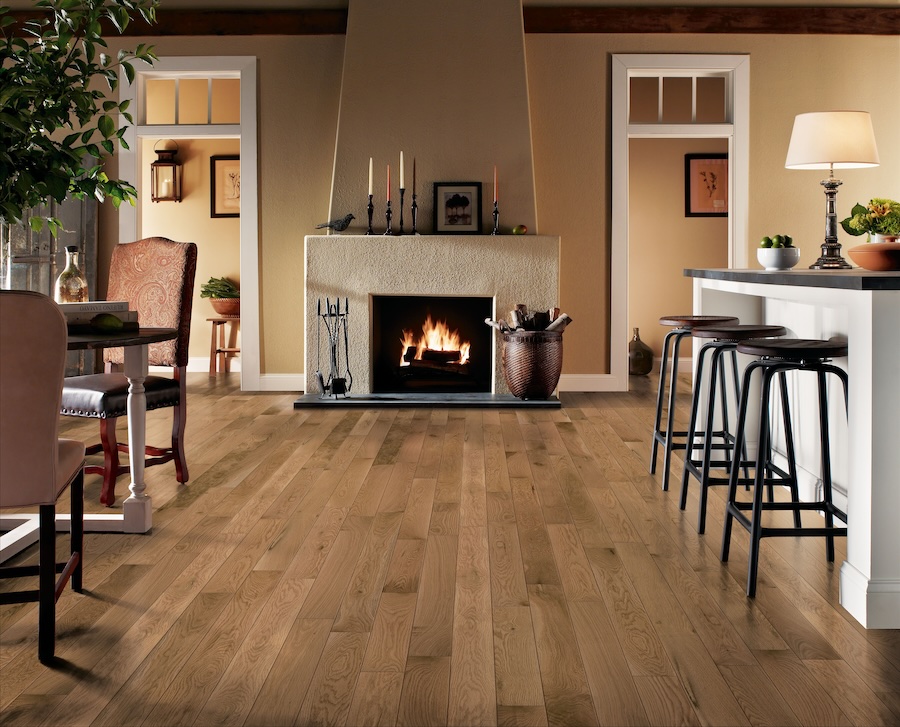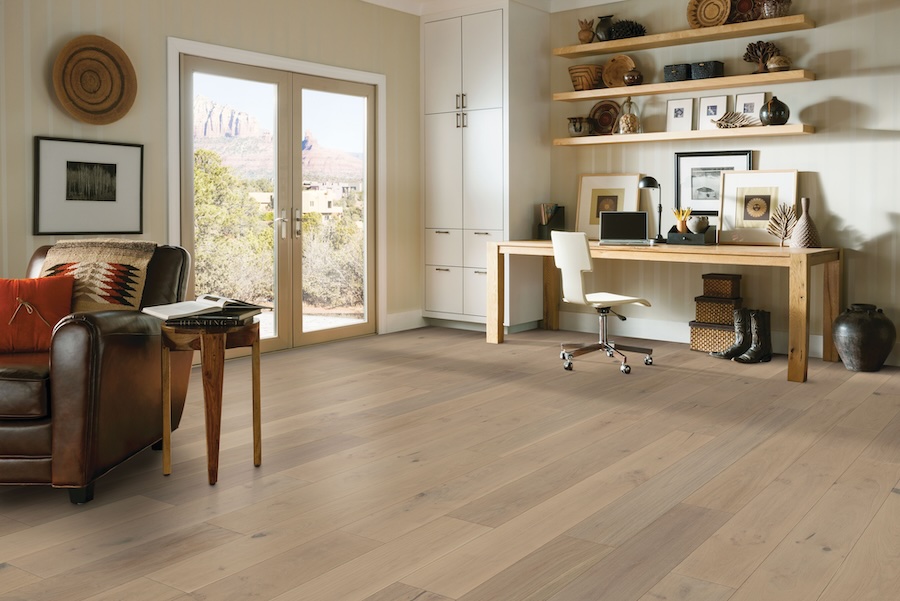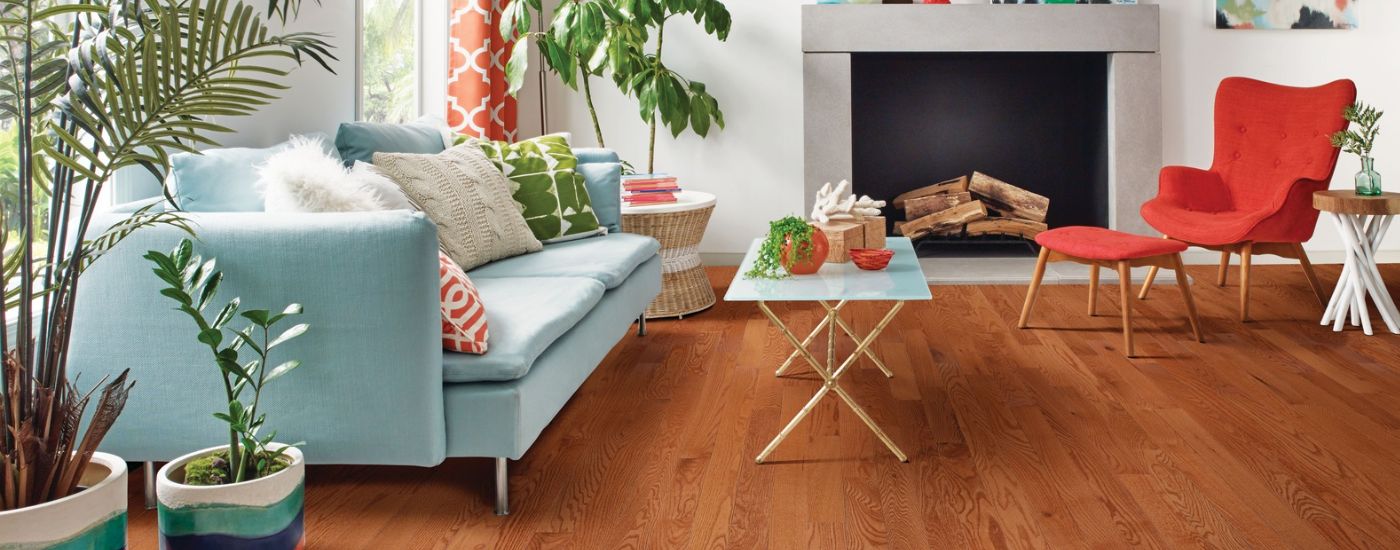Product & Trends Investing in Hardwood Flooring: What Are Your Options?
Aug 14, 2024The main reason the popularity of wood flooring continues to grow is simple: There’s just no substitute for the natural beauty and warmth of real wood. Wood floors are also durable–if properly maintained, they can last a hundred years or more. Combine the unsurpassed beauty and longevity with the fact that indoor air quality is better with wood floors, and it’s no surprise that wood flooring continues to be a homeowner favorite. When shopping for wood flooring, you will find there are many choices available. Here’s a look at your options:
Solid Wood vs Engineered Wood
There are two basic types of wood flooring: solid hardwood and engineered hardwood. The construction of the subfloor and the grade will play a role in which type you can use.

Solid Hardwood Floors
Solid hardwood is just what you would expect: a solid piece of wood from top to bottom. The planks come in a variety of widths and can be bought unfinished or pre-finished. The thickness of the boards generally ranges from 3/4” to 5/16”. Solid wood flooring should only be installed on or above grade (ground level), preferably on a plywood subfloor (not concrete or particle board) in locations that have a controlled level of humidity. If you put solid wood below grade, the moisture coming up through the ground can cause problems. Solid wood flooring can be sanded and refinished many times.
 Disston solid hardwood flooring in Oak Natural, low gloss.
Disston solid hardwood flooring in Oak Natural, low gloss.
Engineered Hardwood
Engineered wood is real wood made of strips of hardwood veneer glued onto layers of backer boards. The grain of each layer runs in different directions, which makes the flooring very stable and more tolerant to changes in temperature and humidity. Once installed, an engineered wood floor can be difficult to distinguish from a solid wood floor. Engineered wood floors work well in any climate and can be installed above, on or below grade and on most any kind of subfloor, including concrete. They are most often pre-finished, but can be purchased unfinished as well. Engineered wood flooring can be sanded and finished, but not as many times as solid wood flooring.
 Goodman engineered hardwood in White Oak Steam
Goodman engineered hardwood in White Oak Steam
Wood Species
Both solid wood and engineered wood are available in a wide variety of species. Each wood species has its own beauty and distinctive character with variations in color and grain patterns. Woods that have tight, even grain structures, like walnut and cherry, adapt to both traditional and contemporary design styles. Woods with coarse grains, like ash and oak, offer a more casual style. Hickory, with its bold flowing grain patterns and wide variations in color, works well in traditional settings. Though some species lend themselves better to certain styles than others, there are really no rules. Creative designers are great at mixing styles for unique looks, so don’t get too wrapped up in which woods go with which styles.
Wood Color
Though different wood species have varied colors, stains are often used to add color to wood. So, if you like the grain of maple, which is naturally light in color, but want a dark floor, you can use stains to get the look you want. In general, extremely dark-colored wood floors tend to work well with modern décor. Light colors go well with contemporary, causal, and country settings. Medium to medium dark tones are often found in more traditional interiors. Of course, designers are always finding creative and fabulous ways to break the rules, so keep an open mind.
Floorboard Width
Narrow boards used in strip flooring are generally less than 3” wide. This is the typical wood flooring you see in many older homes.
Wider planks allow for fewer seams, creating a feeling of openness and making rooms seem larger. Wider planks also accentuate the natural beauty of the wood, allowing the unique characteristics and patterns in the wood to become more noticeable.
The widths of our hardwood planks range from 21/4 to 5 inches.
The wood flooring pros at all Crossville Studios locations can help you choose solid or engineered flooring for the performance you need. They will guide you through wood selection, design requirements, and every aesthetic consideration—as well as installation and long-term care of your custom floors. Connect with us today!


